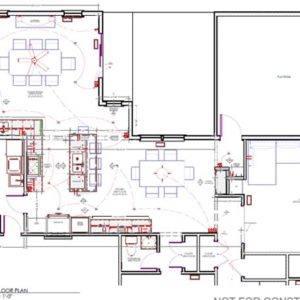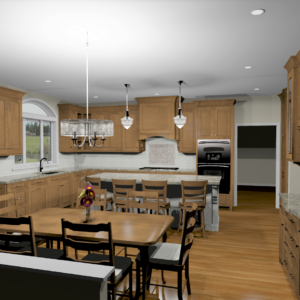To Move or Improve Part 2: Using Design to Help Answer the Question
In an earlier post, we weighed the relative merits of investing in a renovation versus relocating to start anew in a custom or resale home. While many homeowners may desire to stay, over time changing household needs force this decision-making. This can be particularly true among empty nesters. According to AARP, 80+% of 50 year old plus households want to stay in their current home during retirement, but only a small percentage have done the work to prepare those homes.
Challenges to Starting Home Renovations
The biggest challenge to starting a home renovation tends to be procrastination. Not only is remodeling an expensive undertaking, it is also disruptive to family life. As a result, many people avoid renovating for as long as possible, even when finances aren’t a barrier. It can also be difficult for the average person to envision their home configured differently leaving them skeptical as to the potential for their current space to meet their needs. This is what leads most to contemplate relocating over renovating. In this article, we explore how homeowners can utilize design services to better visualize how the space in their current home can be reconfigured to meet their needs.
A Picture Speaks a Thousand Words
As gifted as we may be at describing with words how we can alter a room, the best way to communicate what can be accomplished is to illustrate the various options with drawings. This is known as the “Design” portion of the Design-Build process. At Custom Craft, we also refer to this as the “Create” stage. When clients enter into a design contract with Custom Craft, they can expect to invest approximately 3-7% of the total value of the project on their design. Upon completion of this phase, homeowners not only have a valuable visualization tool, they have a construction budget, as well as all of the relevant construction documents including the floorplan, finishes, fixtures and other specifications for their project. At this point they can make a “go/no-go” decision on whether to proceed to the construction phase, or consider alternatives like relocation.
How Designs are Created
After asking a lot of questions, and listening carefully to our clients to learn how they want to use the space, as well as taking numerous measurements, we produce multiple schematic drawings of a revised floorplan for our clients to consider. Once we have arrived at a viable option that meets their needs, and worked with a client on material selections, we will produce a 3D rendering of the space.
Renovation Design Example
The homeowners for this project wanted to explore how they could make better use of the space available in their kitchen and family rooms. As you can see from the before image of their floorplan below, their kitchen was small, lacked counter space for preparing meals, and was generally dysfunctional for entertaining family and friends. By engaging Custom Craft for our design services, we were able to illustrate for them how their kitchen and family rooms could be reconfigured to provide the features and functionality they desired. Scroll down to see how we designed a floorplan schematic and then created 3D renderings of the kitchen and family rooms to bring the re-imagined space to life.


Need Help Visualizing Your Home?
If you need assistance visualizing how your home could be transformed to better suit your lifestyle, contact Custom Craft. Our talented team of designers and craftsmen will work with you to explore all of your renovation options.

